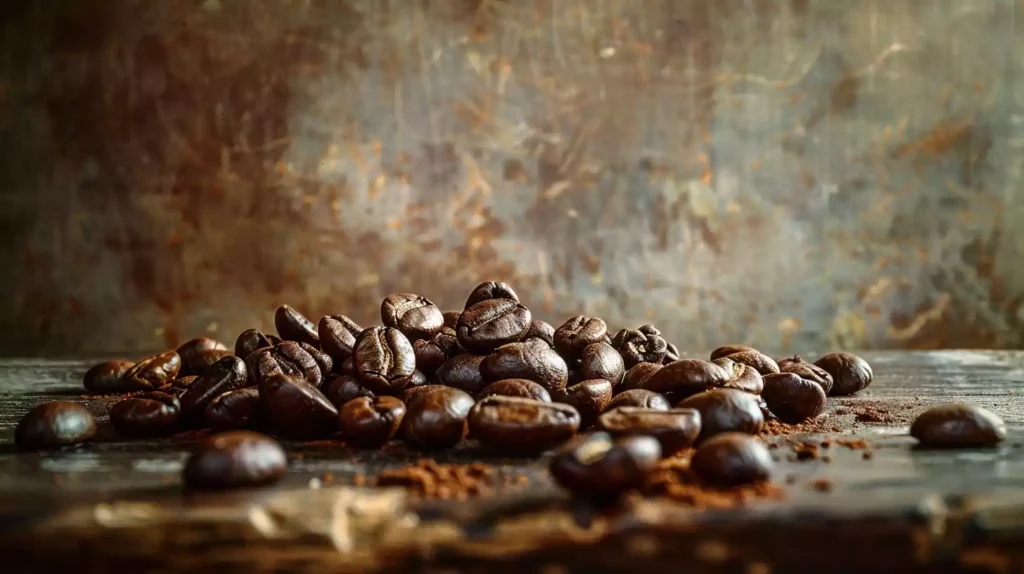When it comes to coffee, most of us know that you can get them as beans and grounds. We also know that there are two major coffee beans, Arabica and Robusta.
However, occasionally you may see the term ‘Espresso Beans’ being used on some bags of coffee on the shelves. How are these espresso beans different from regular beans? Or are they the same?
Generally, coffee beans and espresso beans are both coffee beans. The difference lies in how they are prepared. Regular coffee beans may be roasted for various brewing methods, while espresso beans are prepared for espresso machines. They may also differ in taste.
This post discusses the similarities and differences between regular coffee beans and espresso beans. If you are keen, also feel free to check out our guide on natural vs. washed coffee.

Are Coffee Beans And Espresso Beans The Same?
Regular coffee beans and espresso beans are similar. They are both coffee beans that have been washed, processed, and roasted to be brewed into cups of coffee later. They also have similar physical appearances.
If you are confused about seeing ‘Espresso Beans’ and wonder how they differ from regular coffee beans, you can rest your mind.
This is because they are basically the same thing. Both the espresso beans and regular coffee beans are, in fact, coffee beans.
They may be Arabica or Robusta. These means may be processed in either natural or washed methods. These beans are then roasted into multiple degrees of darkness to produce different tastes and flavors.
You can, in fact, use them interchangeably to make coffee.
But then, if they are the same, why have a separate names then? The differences are not so much in the type but in the intention of making the coffee beans.
Espresso beans indicate that the coffee beans are prepared with espresso in mind. It means the coffee beans are prepared so that they will make a great cup of espresso.
This is commonly achieved by roasting the beans longer and darker. This helps to produce that deep, dark, and bold taste. As a result, it delivers a punch to the palate, and espresso lovers enjoy that.
Coffee Bean vs. Espresso Bean
The difference between regular coffee beans and espresso beans may be that the latter is prepared to make espresso. As a result, espresso beans are usually roasted longer and darker. It also has a deeper, bolder, and stronger taste than regular coffee beans.
| Aspects | Regular Coffee Beans | Espresso Beans |
| Grind Size | Various sizes, to accommodate various brewing methods. | Ground down to espresso sizes, for espresso machines. |
| Roasting | Roasted to various levels of darkness, but commonly light and medium | Commonly roasted dark for a more intense espresso taste |
| Brewing | Brewed with various methods, from Turkish style to French press to percolators | Espresso machine |
| Taste | Various levels of flavor, from light to dark | Usually dark and punchy, for a more intense espresso taste |
From the previous section, we know that espresso and regular coffee beans are basically the same. They are coffee beans that could be ground down and then used to make coffee.
The only subtle difference between the two is the intention. In this case, espresso beans are prepared in such a way that they will make great cups of espresso. However, they will still taste great if you brew them using a Moka Pot or Aeropress.
To make regular coffee beans into espresso beans, coffee roasters typically prepare the beans differently, resulting in differences in grind size, roasting, brewing, and taste.
Grind Size
Coffee beans need to be ground down first before they can be brewed. The grind size may depend on the brewing method used. Percolators use the most coarse grind, while Turkish coffee needs the coffee ground to be as fine as powders.
Regular coffee beans may be used for multiple brewing methods, which means they may be ground into various sizes. With espresso beans, however, most will end up being ground down to espresso machine sizes, which are very fine, but coarser than Turkish coffee.
Roasting
Espresso is a small cup of coffee with a very intense flavor. People who love espresso enjoy drinking it as it is strong and delivers a bold, dark punch. As a result, espresso beans are prepared to ensure the barista can produce espressos of similar qualities.
This means espresso beans are roasted much longer in the roaster. This helps to strengthen the flavor of the coffee and bring out more of the oils in the beans. The longer roast time also produces a darker coffee with a strong taste that espresso lovers love.
Regular beans generally do not go for long roasting but light and medium roasting to preserve more natural flavors. Shorter roasting also keeps the coffee light and not too strong in taste.
Brewing
Espresso beans are prepared with the espresso machine in mind. In many cases, espresso beans pull espresso shots from the machines.
You may still use espresso beans in other brewing methods, although you may need to get used to the bold, strong taste.
This is different from regular coffee beans. In many situations, the coffee beans may be brewed using various methods, from Minipresso to French Press, to the Keurig machine.
Taste
Finally, regular coffee beans and espresso beans have different taste profiles. In many cases, regular coffee beans are roasted more lightly. Some may be roasted to medium or medium dark intensity.
This means regular coffee tastes lighter, with hints of floral, fruit, berry, or herbs. This may also explain why regular beans are served with a larger volume of water to make Americano, or mixed with milk or cream to make Lattes or Cortados.
However, espresso beans usually go through long and darker roasting. This results in coffee that tastes strong, bold, and dark. This is then further concentrated by serving the coffee with small amounts of water to deliver that special punch of flavor espresso lovers enjoy.

